Types of diapers
Cloth diapers:
- come in a variety of styles:
- Two-part, an absorbent diaper (flat or shaped) and cover come separately
- All-in-one, an absorbent inner layer and cover are one
- Pocket diapers, a cover and inside layer that then has a pocket in-between to add the absorbent layers as needed
- may be fastened with snaps, Velcro® or grip fasteners
- can be either one-size-fits all (adjustable as the baby gets bigger so cost effective) or sized for weight of baby (these are a trimmer fit but there is a need to buy different sizes as the baby grows)
- the outer layer will be a water resistant material, for example wool, fleece or polyester
- the absorbent layer could be a toweling, micro-fibre or flannel material
- the layer against the skin is often fleece or velour to help separate the absorbent layer from the baby’s skin
- dirty diapers can be stored in a pail with a lid and washed in a regular washing machine without pre-soaking, using a hypoallergenic laundry detergent
- may be rented from a diaper service that will pick up the soiled diapers and return clean ones to your home
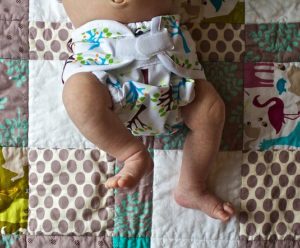
Disposable diapers:
- come in a variety of sizes based on baby’s weight
- some are compostable and biodegradable (where there are facilities)
- they are slim fitting under clothing
- combine an outer water resistant layer and an inner layer for absorbency (often using silica gel)
- are disposed of with household waste
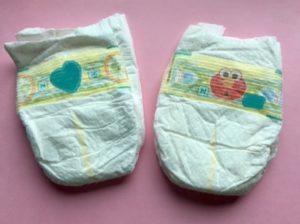
Changing your baby’s diaper
- Wash your hands.
- Place your baby on a safe, flat surface, for example the floor on a towel.
- Remove the soiled or wet diaper.
- Clean your baby’s diaper area with warm water and soft washcloths, or with scent-free, hypoallergenic baby wipes.
- Dry your baby’s diaper area carefully or allow to air dry, to help prevent diaper rash.
- Barrier or diaper rash creams are not needed, unless the baby has a diaper rash.
- Put on a clean diaper.
- Dispose of the used diaper and wash your hands.
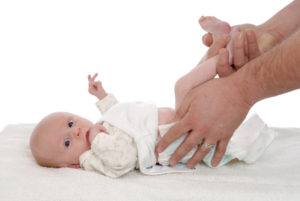
Small amounts of dark colored urine (orange or rust colored) are normal in the first few days. This is called uric acid crystals. After day 3 the urine should be in larger amounts and a light yellow color.
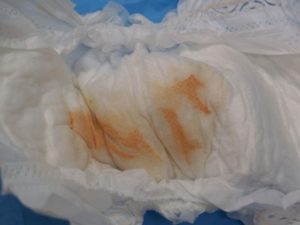
Photo credit: Janelle Aby, MD
Wipe the skin around the vagina gently from front to back. This will help prevent spreading germs from the anus to the urethra. Some babies will have a white mucous discharge from the vagina. You do not need to scrub to remove the discharge. A baby can also have faint blood (pink) streaks in the discharge. This is normal and will go away with time.
The penis is covered by skin (foreskin). Do not pull the foreskin back. This may cause infection and/or tightening of the foreskin. By the time your child is 3 to 5 years old, the foreskin will usually loosen and can be pulled back during bathing. Talk to your doctor if you have any concerns.
If your child is circumcised, your doctor or nurse will explain how to care for the area.
Your baby’s bowel movements
In the first 48 hours, your baby will pass black, sticky stools (called meconium) and then greenish-brown stools. After 48 hours, the color and consistency of your baby’s stools will depend on how you are feeding your baby.
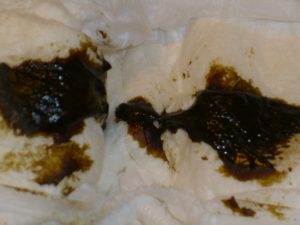
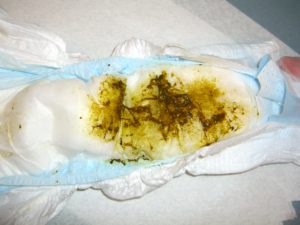
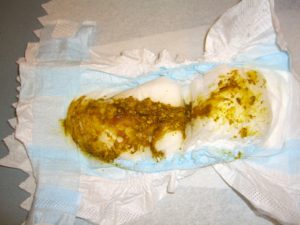
A breast/chestfed baby
- should easily pass stools that are seedy, yellow and loose.
- may pass stools at every feeding.
A formula fed baby
- should easily pass stools that are soft, pasty and brown, green brown or light yellow in color.
- usually has at least 1 to 2 stools in 24 hours. Some formula-fed babies pass stools at every feeding.
Between one to two months of age, both breast/chestfed and formula-fed babies may have bowel movements less often. Stools should be soft and easy to pass. Between 6-8 weeks of age some exclusively breast/chestfed babies may have very infrequent bowel movements (every 7 -10 days). This is normal.